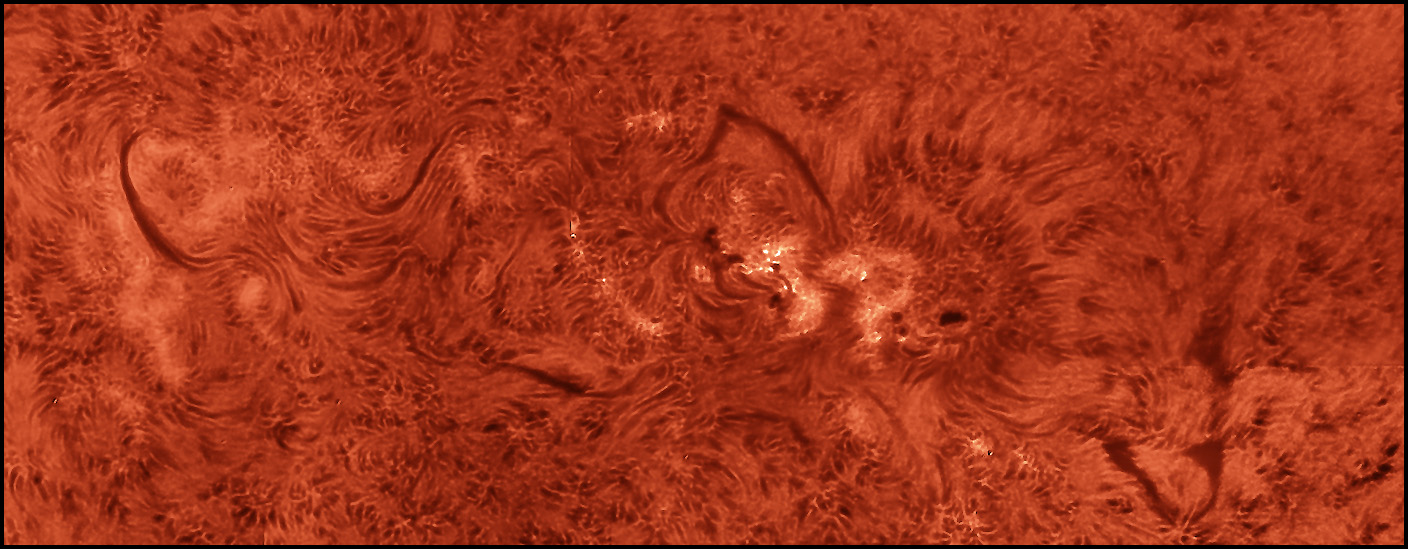3/16/2015. Back to the cul de sac after a long winter. I had a frustrating night under the stars last night (a rare, poor forecast from the Clear Sky Clock) and hauled the 90mm achromat, G11, etc, up the hill to help make up for it. Seeing was pretty dismal, but quite variable, so I caught some good, brief interludes. I took a ton of thousand-frame videos and a pound or two of 400 frame "snapshots" then had to find a way to get them off the imaging computer and onto the desktop. All my ethernet cables have gone missing; my big thumb drives are really slow; and I couldn't get the imaging computer to talk to a 64GB SD card. So I sent them over the wifi connection while we cooked and ate supper and watched a movie. About four hours. (In retrospect, I could've taken the imaging computer to the dedicated ethernet line out by the R-C and off-loaded them that way.)
The files were mostly organized in mosaics of 2-6 images with multiple candidates for each panel. I sketched the field, listed all the vids that could be used for each section, then auditioned them to find the best for each section. I must have discarded 20GB of raw data and kept about half that. The workflow was the discovery of the day; it was better workflow than final result. But the year is very young:

C-flares Around AR2301-2297
March 15, 2015
Best 150 of 1000 frames x 3
3/23/2015. Lousy cold, worn out from shooting a wedding yesterday (we introverts get really tired when hanging out in crowds, especially in extroverted crowds, and ain't no crowd extrovertier than a Smith wedding crowd --fun, but a great muchness), slept on the couch last night so I could sleep sitting up and be uncongested, built a mockup of a website for a new client first thing this morning, so of course I put the solar observatory together this afternoon and stared at the Sun from the cul de sac:

Solar Fun
11 panel mosaic
best 75 of 500 frames each panel
Frankenscope: 90mm Orion achromat, Lunt 60 THa
(Click image for a closer look.)
The sky was slightly hazy, but I thought seeing might be good, and it was for here downwind of the Blue Ridge. 15 minutes to assemble the kit, 30 to acquire 20GB of video, 15 more to take it down; one hour to transfer the video to the desktop (why!?!); then hours of fun calibrating, refining, and stitching the results. I've got some damn strange hobbies.
4/8/2015. A fresh active region on the solar meridian threw an M1 flare this morning; high clouds meant moderate transparency but steady air this afternoon. Here's an 8-panel mosaic of AR 2320 and vicinity.

Click the image for a closer look, although I'm not sure the instrument is really up to producing images at the scales I want. I think I am pushing the optics and the atmosphere just a little too hard. The usual tech specs (best 60 out of 500 using AviStack2; 8 fields; PixInsight to massage and PhotoShop to merge).